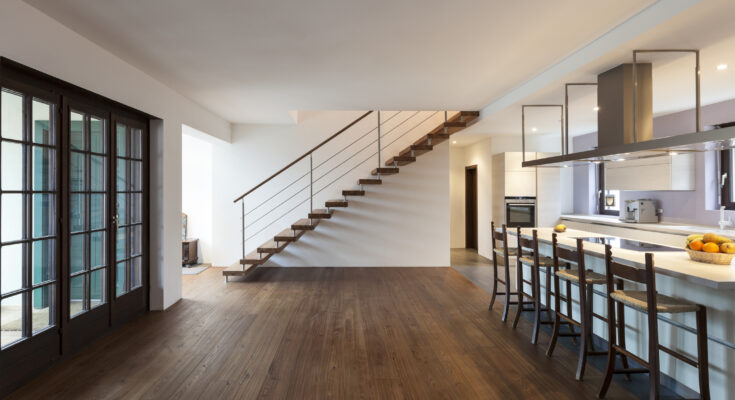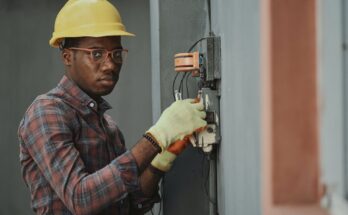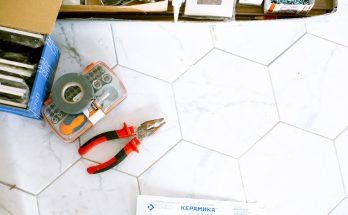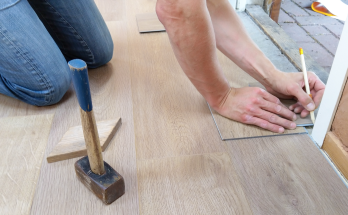The decision to renovate the floors of a home is often transformative, with the potential to significantly enhance both its aesthetic appeal and market value. As homeowners seek to revitalise their living spaces, the impact of floor renovations cannot be understated. From elevating the overall ambience to attracting prospective buyers, the importance of this renovation endeavour extends beyond mere visual enhancements. Let’s explore the influence of floor renovations on property value and appeal, shedding light on the key factors that contribute to a successful revitalisation project.
Enhancing Aesthetic Charm and Visual Cohesion
Renovating the floors of a home presents an opportunity to infuse fresh charm and elegance into the living environment. Whether opting for timeless hardwood, sleek laminate, or stylish tile, the choice of flooring material can dramatically transform the ambience of each room. By selecting a flooring design that complements the existing decor and architectural style, homeowners can achieve a harmonious visual cohesion that resonates throughout the entire space, elevating its overall allure.
Boosting Market Value and Competitiveness
Investing in floor renovations can yield substantial returns in terms of property value. Updated, well-maintained floors not only showcase a homeowner’s commitment to upkeep but also contribute to the overall appeal and desirability of the property. In the competitive real estate market, renovated floors can serve as a compelling selling point, distinguishing the home from others and potentially commanding a higher asking price. Studies have shown that updated flooring is a key factor for homebuyers, often influencing their decision-making process and willingness to invest in a property.
Modernising Functionality and Durability
Beyond aesthetics, floor renovations offer an opportunity to modernise the functionality and durability of the home’s flooring. Advances in flooring technologies have led to the development of materials that are not only visually stunning but also highly resilient and easy to maintain. Whether it’s installing scratch-resistant surfaces, water-resistant laminates, or eco-friendly alternatives, homeowners can embrace innovative flooring solutions that align with their lifestyle needs and long-term sustainability goals.
Creating Lasting Impressions
Renovated floors have the power to evoke emotions and create lasting impressions on residents and visitors alike. The tactile experience of walking on freshly renovated floors, combined with the visual impact of a revitalised space, can instil a sense of pride and contentment among homeowners. Moreover, for prospective buyers, well-executed floor renovations can leave a memorable impression, compelling them to envision themselves within the transformed space and fostering a deeper emotional connection to the property.
In conclusion, the revitalisation of home floors represents a dynamic pathway towards enhancing both the intrinsic value and external appeal of a property. By embracing quality materials, thoughtful design choices, and professional craftsmanship, homeowners can embark on a journey of transformation that transcends the physical realm, leaving a lasting legacy of beauty and value within their homes.
DIY Guide: How to Renovate Floorboards Yourself
Renovating floorboards can be a rewarding and cost-effective way to breathe new life into your living space. Whether you’re aiming to restore the timeless charm of Victorian floorboards or enhance the allure of hardwood floors, embarking on a DIY renovation journey can yield impressive results when approached with meticulous care and attention. Here’s a guide that will walk you through the step-by-step process of renovating floorboards yourself, covering essential techniques and considerations for achieving professional-quality results.
Step 1: Assessing and Preparing the Floorboards
- Begin by removing any existing floor coverings, such as carpets or laminate, to expose the bare floorboards.
- Thoroughly inspect the floorboards for signs of damage, protruding nails, or gaps between the boards. Address any structural issues and ensure a level surface before proceeding.
Step 2: Sanding the Floorboards
- Utilise a floor sander to gradually sand the entire surface of the floorboards, starting with a coarse grit sandpaper to remove old finishes and imperfections.
- Progressively transition to finer grit sandpapers to achieve a smooth and uniform surface, paying special attention to edges and corners that may require hand sanding.
Step 3: Repairing and Filling
- Fill any gaps or cracks in the floorboards using a suitable wood filler, ensuring a seamless and even appearance across the entire floor surface.
- Replace any damaged or weakened floorboards, securing them firmly in place to reinforce the structural integrity of the floor.
Step 4: Staining and Finishing
- Choose a high-quality wood stain that complements the desired aesthetic of your space, applying it evenly across the floorboards to enhance their natural beauty.
- Once the stain has thoroughly dried, apply a durable sealant or lacquer to protect the floorboards from wear and tear while imparting a lustrous finish.
Step 5: Maintenance and Care
- Implement a regular cleaning routine, involving gentle sweeping or vacuuming to remove dust and debris from the rejuvenated floorboards.
- Consider periodic resealing or refinishing to uphold the longevity and visual appeal of the renovated floorboards, preserving their enduring elegance.
By following these detailed steps and leveraging the insights provided by reputable sources, you can embark on a gratifying journey of self-renovation, breathing new vitality into your living space through the restoration of floorboards. Embrace this opportunity to infuse character and sophistication into your home, all while revelling in the pride of having accomplished a remarkable transformation through your efforts.
For further assistance or personalised guidance on renovating specific types of floorboards, don’t hesitate to seek professional advice from flooring specialists.



